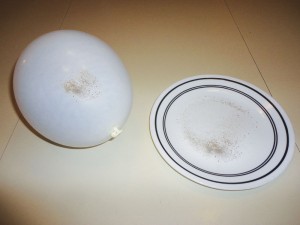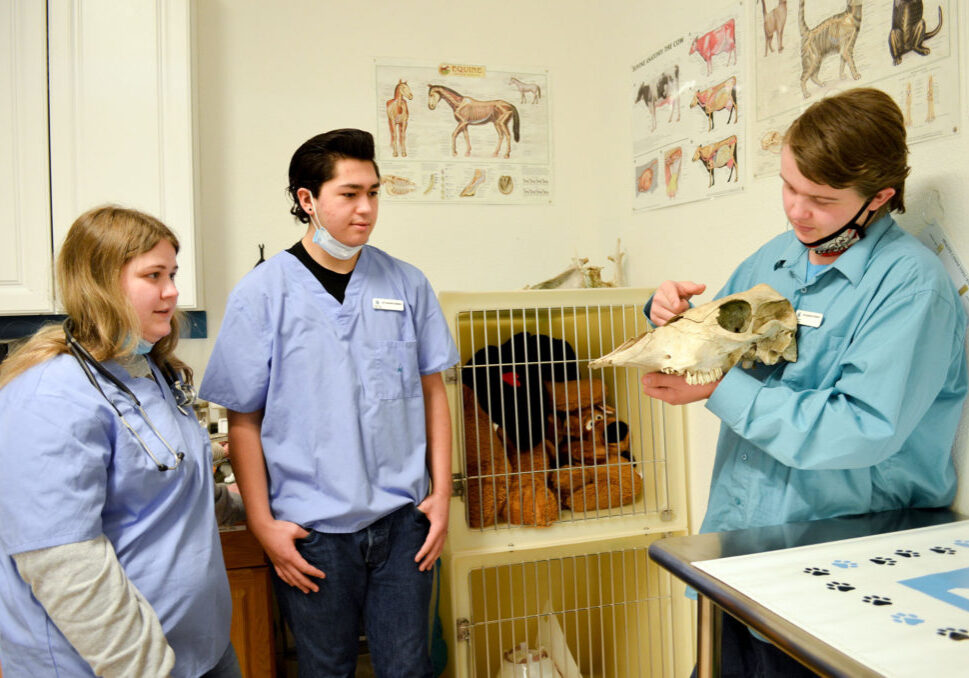 Are you ready for a challenge? Create a mixture of salt and pepper – your task will be to separate them again! How can you do it? Mix the two together, spread the mixture out on a plate and give it a try.
Are you ready for a challenge? Create a mixture of salt and pepper – your task will be to separate them again! How can you do it? Mix the two together, spread the mixture out on a plate and give it a try.
Maybe you can come up with a cool technique for getting the salt and pepper apart, but did you know you can use static electricity to do it easily?
What is static electricity? Ever shuffle across the carpet and then reach out for a doorknob only to get a shock when you do so? Ever wonder why that happens? Let’s explore the science behind static electricity and figure out how to use it to separate the salt and pepper.
Materials:
A plate, salt, ground pepper, a balloon, and a flannel shirt (or something similar) to use to create a static charge.
Procedure:
1. Combine the salt and pepper on the plate. Mix them well so it’s hard to pull them apart.
2. Blow up the balloon and tie it shut.
3. Rub the balloon vigorously (but carefully) on a flannel shirt (any shirt should probably do). You’ll know the balloon is charged when it starts to crackle or makes your hair stand up when you hold near your arm or head.
4. Hover the balloon over the top of the salt and pepper, and watch what happens!
Explanation:
If properly charged, the balloon will attract the tiny ground pepper flakes immediately out of the salt. Those little bits will be plastered onto the side of the balloon.
But why?
When you rub the balloon on the flannel shirt, tiny things (particles) called “electrons” move from the shirt to the balloon. The electrons hold an electrical charge, and that charge attracts certain substances … like the hair on your arm or head, or the bits of pepper. (Salt won’t move for reasons you’ll learn about in chemistry and physics classes.)
Electrons are found in everything around us and play a big role in creating heat and the flow of electricity. When the balloon becomes supercharged with electrons it creates an unbalanced, unnatural condition that causes a flow of electricity as the particles try to rebalance themselves.
Experiment further:
Good scientists think of questions they can ask and ways to change a system. Can you? Can you think of other things that the balloon might attract? Try sticking the balloon to a wall and see what happens. Here’s another trick: Charge up the balloon and then slowly bring it closer to a thin stream of water coming out of your faucet. It will bend the water out of the way!
I hope you enjoyed these simple experiments and learned a little about electrons and static electricity.
Posted in: Education
Comment Policy: All viewpoints are welcome, but comments should remain relevant. Personal attacks, profanity, and aggressive behavior are not allowed. No spam, advertising, or promoting of products/services. Please, only use your real name and limit the amount of links submitted in your comment.
You Might Also Like...

Consider Summer Tutoring
School’s nearly out for summer. Are you thinking about ways to give your child an educational boost, or brainstorming ways to keep your child’s mental skills sharp? Tutoring can help […]

How Education Has Changed Now That Students Can “Google” the Answer
I love research and am so happy that instead of looking through paper index cards and bookshelves and climbing library stairs, students can find answers to much of their research […]

Dual Language Immersion: What Is It And How Does It Work?
School language immersion programs, first appearing in the United States and Canada in the 1960s, have gained popularity over the years. Currently there are nearly 400 such programs across 30 […]

Giving Kids a Great Head Start: Spotlight on Two Remarkable Shasta County Teachers
Teachers typically have their hands full every school day. That is especially true for those taking on our pre-K kiddos. The unique challenges that come with honing these young minds […]



